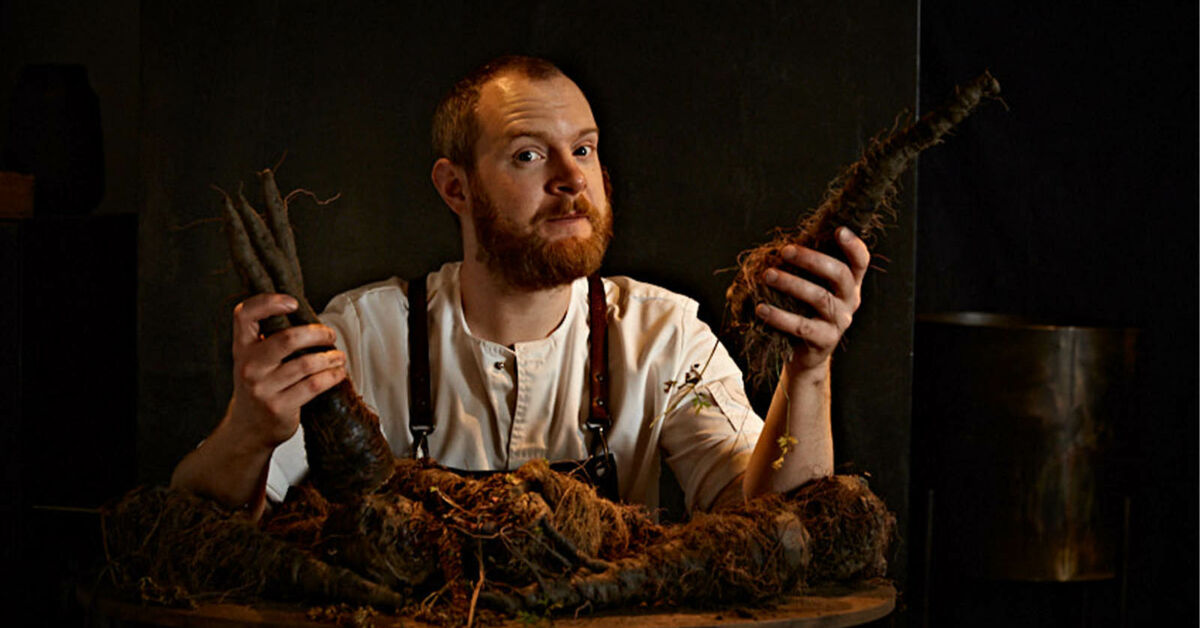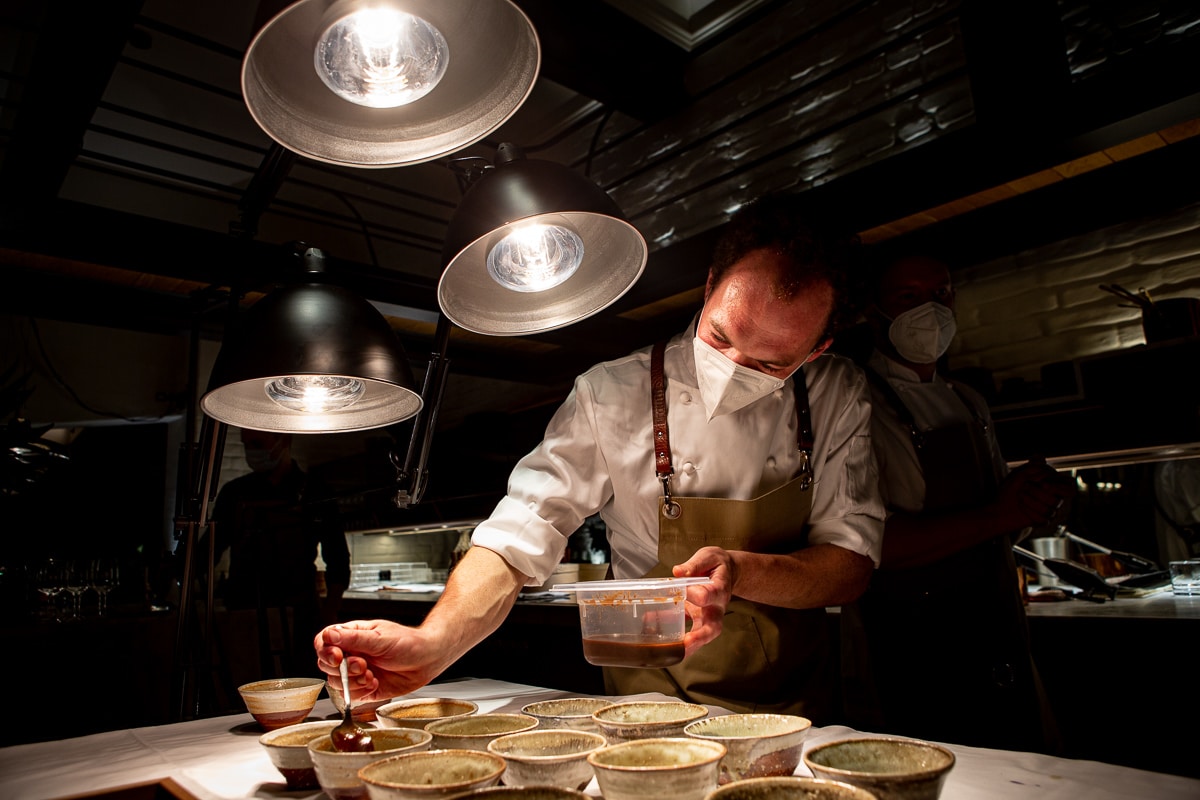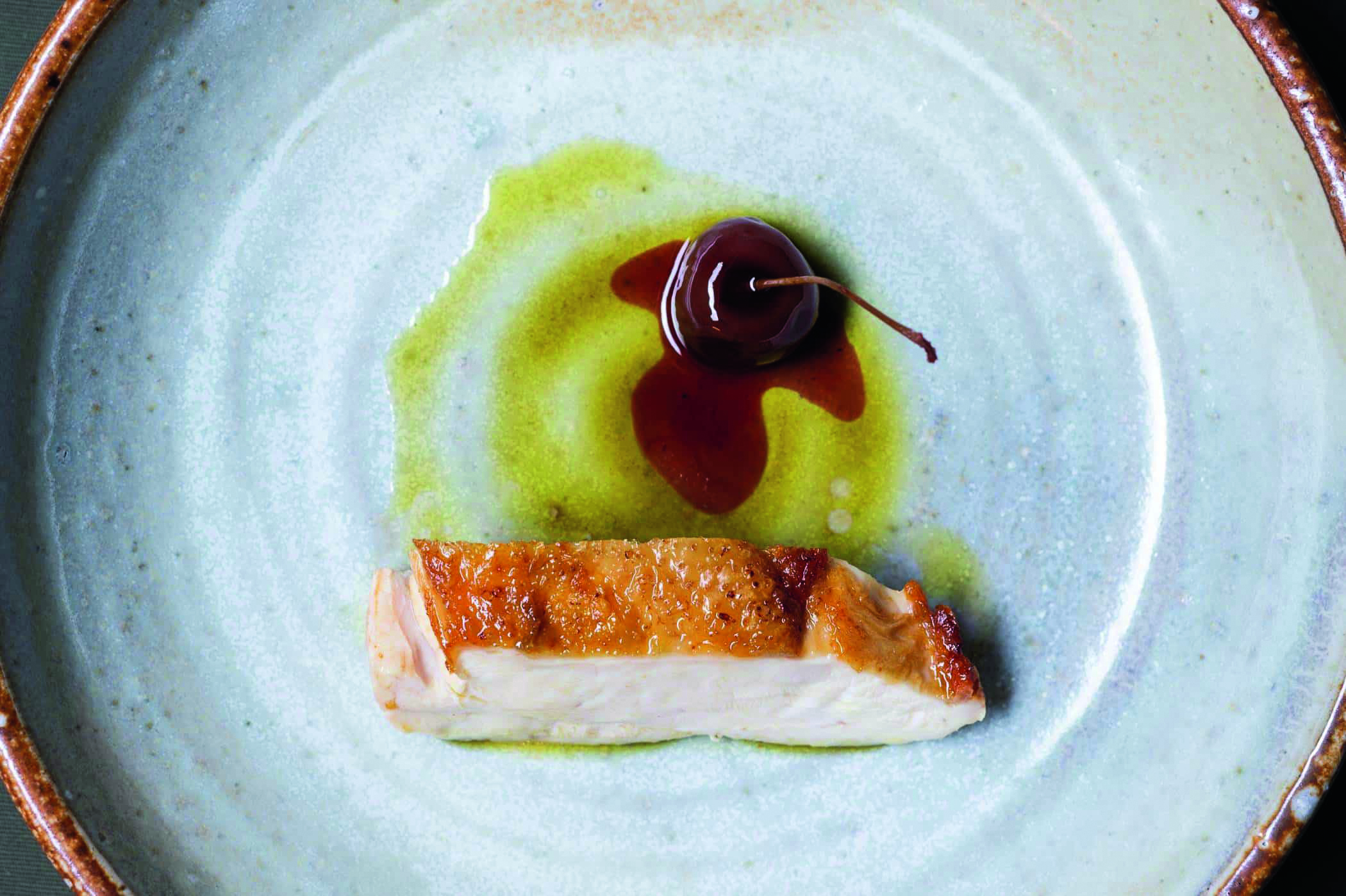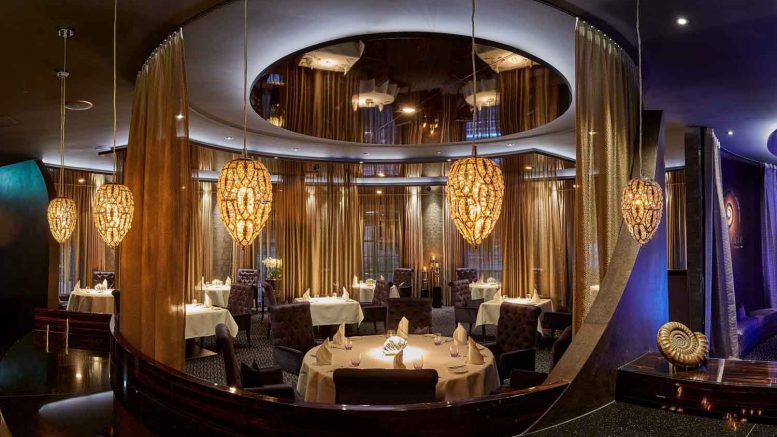A place where top quality, not the menu, is guaranteed. Felix Schneider’s Nuremberg restaurant, ETZ, is a true theatre of gastronomy, where everything is about sustainably sourced ingredients, special cooking methods and, of course, the harmony of refined flavours. ETZ: Felix Schneider’s 2 Michelin and 1 Michelin Green star restaurant.
ETZ recommends that anyone reading these lines shouldn’t be looking for the same dishes when they enter the restaurant even a month later. They say that because their cuisine is deeply rooted in the region, it is based on produce they grow themselves or that comes from and is grown in and around Nuremberg. As many of these are processed on the day, the daily offer is highly dependent on the weather conditions. It’s no coincidence that the name of the restaurant is so evocative, as ETZ comes from the French dialect and roughly translates as ‘Now’.

True, driving from Budapest directly to the restaurant, we missed the opening of the day, but luckily our arrival was monitored through the ETZ’s glass portal, and the chef, Felix Schneider, himself stepped out through the curtained door. Not only to welcome us, but also to let us in on some behind-the-scenes secrets. Because the ETZ is not a place where guests rotate throughout the evening, choosing what to order from the menu.

The doors to the Nuremberg stage of top gastronomy open at 6pm and once all the pre-registered guests are seated, the restaurant is already curtained up for half a week. This creates a cosy atmosphere in the small but very stylish room, where guests can taste the culinary creations of the evening’s menu, which is constantly being created by the chefs in the show kitchen. This special gastronomic performance, lasting around 4 hours, will offer 12 to 16 dishes (including meat or vegetarian on request), depending on the season and the weather), for a sophisticated taste experience.

And they won’t be disappointed, because Felix Schneider always seeks out the essence of the flavours of the ingredients to create his unique dishes. His menus are therefore full of unique flavours, and while they may seem simple, they require complex procedures and sometimes days of work to prepare. And while the young chef is able to go beyond the basics of traditional German cuisine, he still sticks to the roots of German gastronomy to create sustainable, healthy dishes. Often, they are still reminiscent of traditional flavours, but created with a completely different, locally sourced, healthy ingredient.

„We believe that every product is fantastic and only needs the right moment to be perfected to create something new,” explains Felix Schneider, „once that perfection is harvested, ideas that are a different function from the usual can be realised. Because, for example, it’s not always the case that tomatoes have to be tomato salad. It can even be a fruit, when it gets enough sugar in a year, and it’s worth taking advantage of its acidity to put it on the table as part of a special dish. But in the spirit of sustainability, we don’t serve coconut, for example, because it would come from far away, but we have found locally grown ingredients that can perfectly recreate its flavour. We are also inspired by respect for the environment, for example when we buy a whole fish rather than a fish fillet, and we use it by processing all the usable parts of the fish for the different dishes on the menu.”
 Moreover, the chef’s team is blazing a trail not only in terms of ingredients, but also in the processes involved in preparing the dishes. While lactic fermentation used to be one of their dominant methods, they now rely mainly on the magic of koji, a fungus that has been domesticated for thousands of years and ferments food through enzymatic processes, which is fundamental to Japanese gastronomy. The result is a sophisticated and unique flavour, an important element of which is the mysterious fifth flavour, umami (which is not perceived as such, according to experts). What is known in Japanese as a pleasant salty taste.
Moreover, the chef’s team is blazing a trail not only in terms of ingredients, but also in the processes involved in preparing the dishes. While lactic fermentation used to be one of their dominant methods, they now rely mainly on the magic of koji, a fungus that has been domesticated for thousands of years and ferments food through enzymatic processes, which is fundamental to Japanese gastronomy. The result is a sophisticated and unique flavour, an important element of which is the mysterious fifth flavour, umami (which is not perceived as such, according to experts). What is known in Japanese as a pleasant salty taste.
The ETZ team’s mastery of koji fermentation techniques and their ability to use them in a targeted way have produced some truly impressive results. For example, the koji matured mangalica pork ham has a wonderful texture and floral, nutty aroma, while the sauces and French dressings, vinaigrettes, without animal proteins, conjure up a depth of flavour that is otherwise only found in stewed sauces.
„When we create new dishes, my goal is always to make them not only tasty, but also memorable for our guests. We never did all this for the Michelin star, because we wanted to create a cuisine that absolutely has its own way, its own identity. On the other hand, the recognition of a Michelin star is important because it attracts attention and brings many new guests to the restaurant. People who love our food and come back to us, which is what we are really working for. For me, the second Michelin star was the real recognition, because I feel it was a recognition of our achievements and our past,” explains the star chef from Nuremberg. He is convinced that his team likes to break kitchen conventions because it is also a way of playing with their history. The imprint of which, while reinforcing the unique character world and suggesting the continuity of the ETZ story, can be recognised in several new dishes.

3 ETZ dishes with Michelin stars
- Bread bowl. Specially made bread from 50-hour dough and butter made with a special process is accompanied by: cured ham, lardo (cured fatty bacon), cooked ham and prosciutto, as well as pickled cucumber, radish, magnolia blossom and onion.
- Flower cake. The heavily salted sourdough pastry is fried in fat in Franconia in the ancient manner of a küchle (flame-like) and garnished with ancho chilli, sheep’s milk and lots of late summer flowers. The onion and garlic flowers are particularly tasty, bringing a pleasantly warm flavour to the mouth.
- Battle dish. An iconic dish from the ETZ team, consisting of fermented red cabbage soup bound with cold butter, garlic and bacon potatoes and dried and grated pork liver.
Zoltán M. Érsek




